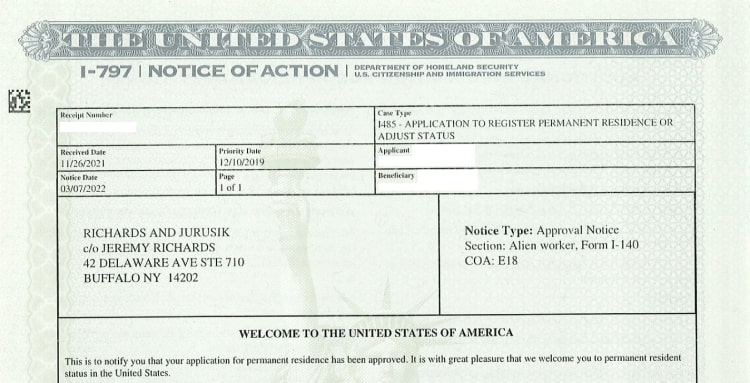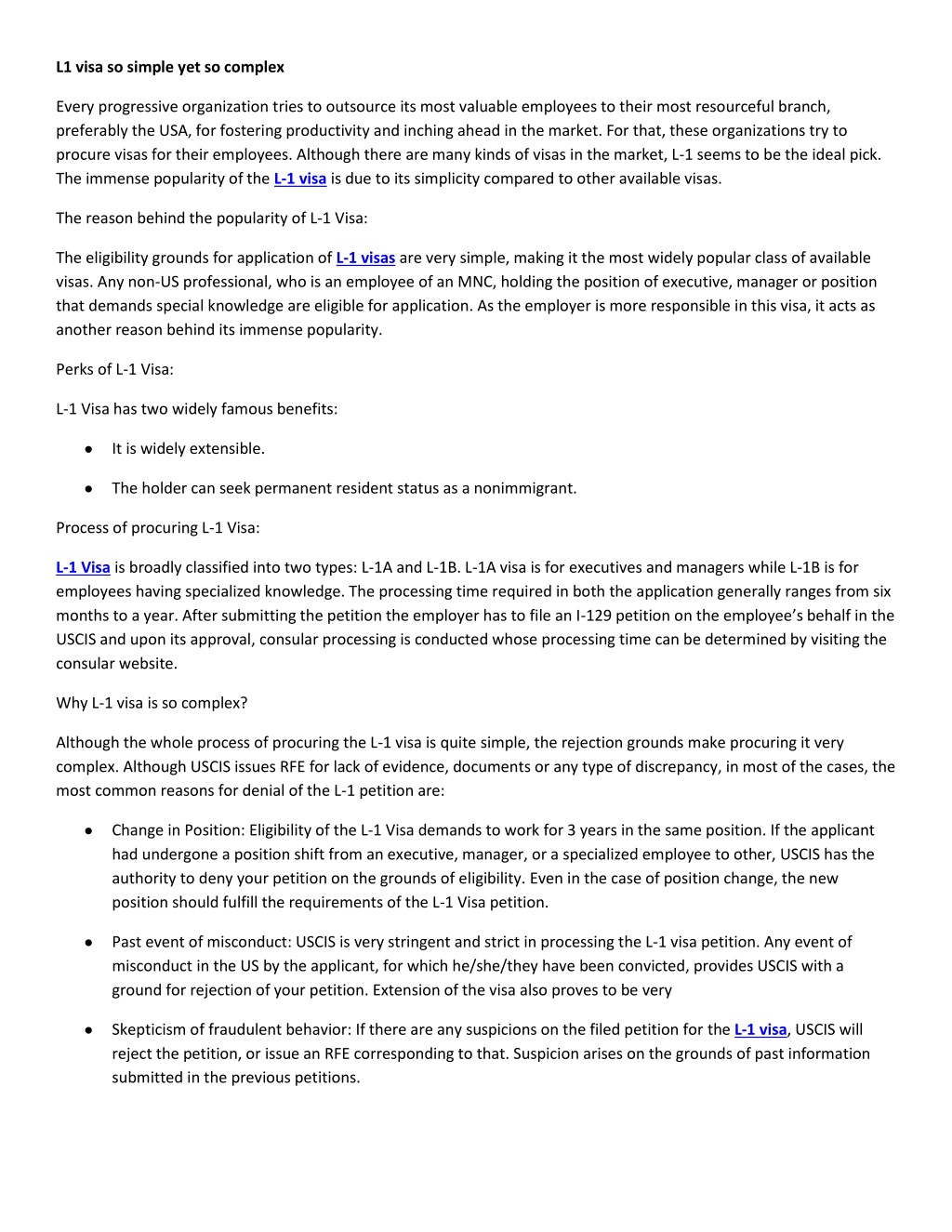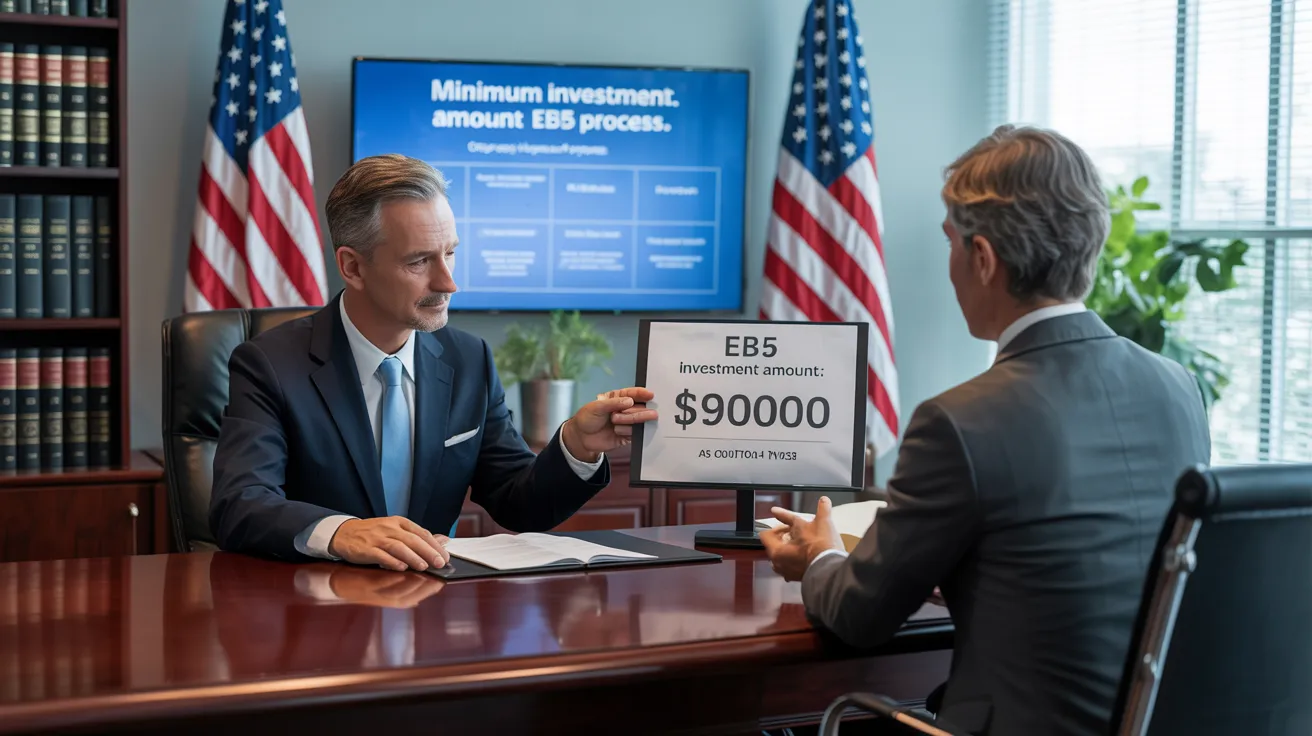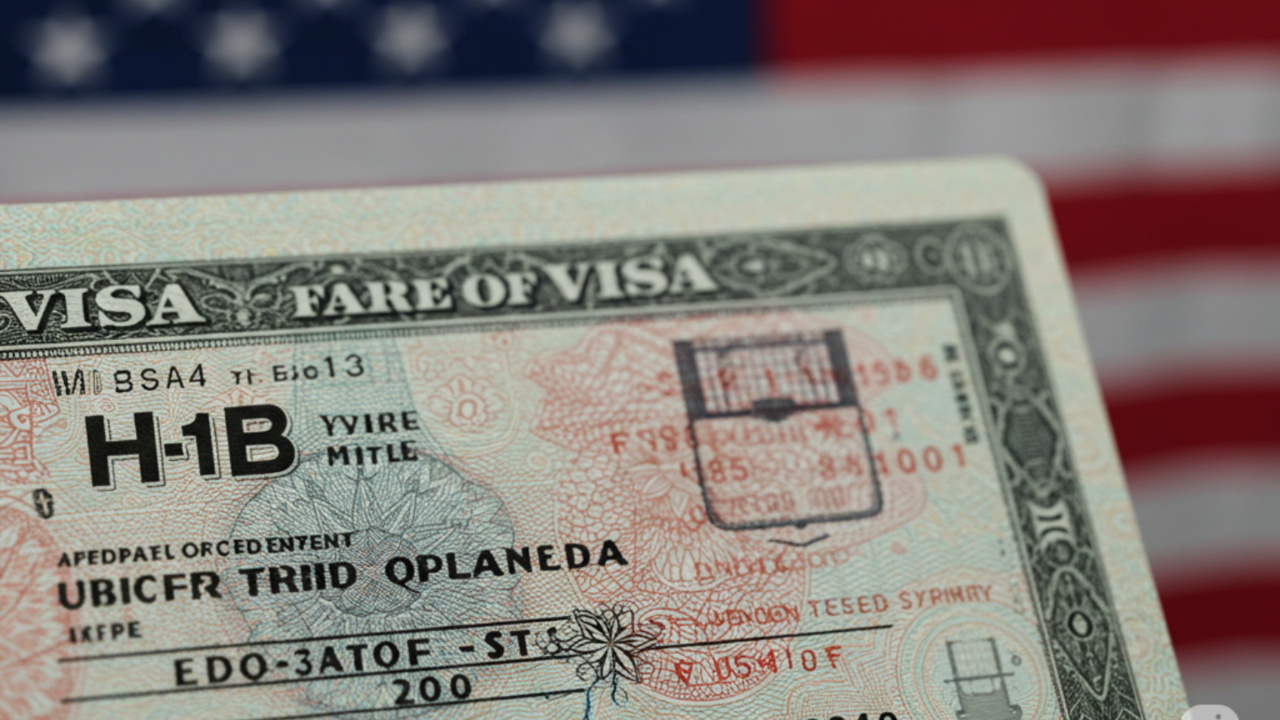Apply for L1 Visa
Some Known Questions About L1 Visa.
Table of ContentsThings about L1 VisaThe Greatest Guide To L1 VisaThe Buzz on L1 VisaNot known Details About L1 Visa L1 Visa Things To Know Before You BuyL1 Visa - Questions
Readily Available from ProQuest Dissertations & Theses Worldwide; Social Scientific Research Costs Collection. (2074816399). (PDF). Congress. (PDF). DHS Office of the Examiner General. (PDF). (PDF). "Nonimmigrant Visa Data". Recovered 2023-03-26. Division of Homeland Safety Office of the Inspector General, "Evaluation of Susceptabilities and Potential Abuses of the L-1 Visa Program," "A Mainframe-Size Visa Loophole".
U.S. Division of State. Retrieved 2023-02-08. Tamen, Joan Fleischer (August 10, 2013).
The Best Strategy To Use For L1 Visa
In order to be eligible for the L-1 visa, the foreign firm abroad where the Beneficiary was employed and the United state company need to have a certifying relationship at the time of the transfer. The different types of certifying relationships are: 1.
Business An owns 100% of the shares of Firm B.Company A is the Parent and Business B is a subsidiary. There is a qualifying connection in between the two firms and Company B should be able to fund the Beneficiary.
Example 2: Business A is included in the united state and intends to petition the Recipient. Firm B is included in Indonesia and employs the Recipient. Firm A has 40% of Company B. The staying 60% is possessed and regulated by Business C, which has no relationship to Firm A.Since Business A and B do not have a parent-subsidiary relationship, Firm A can not sponsor the Recipient for L-1.
Company A possesses 40% of Company B. The continuing to be 60% is owned by Company C, which has no connection to Firm A. Nevertheless, Firm A, by formal contract, controls and full manages Business B.Since Business A has much less than 50% of Firm B but manages and manages the firm, there is a certifying parent-subsidiary relationship and Company A can sponsor the Beneficiary for L-1.
The 9-Minute Rule for L1 Visa
Company B is integrated in the U.S.
L1 Visa - Questions

The L-1 visa is an employment-based visa classification developed by Congress in 1970, permitting international business to transfer their managers, executives, or key personnel to their U.S. operations. It is typically referred to as the intracompany transferee visa.

In addition, the beneficiary needs to have functioned in a supervisory, executive, or specialized worker placement for one year within the 3 years preceding the L-1A application in the foreign business. For brand-new workplace applications, international work should have remained in a supervisory or executive capability if the recipient is pertaining to the United States to work as a supervisor or exec.
L1 Visa for Beginners

If approved for a united state business functional for greater than one year, the preliminary L-1B visa is for as much as three years and can be prolonged for an added two years (L1 Visa). Conversely, if the U.S. business is recently developed or has been functional for less than one year, the preliminary L-1B visa is provided for one year, with expansions offered in two-year increments
The L-1 visa is an employment-based visa classification developed by Congress in 1970, allowing international firms to move their supervisors, execs, or crucial employees to their united state procedures. It is generally described as the intracompany transferee visa. There are two major types of L-1 visas: L-1A and L-1B. These kinds appropriate for staff members employed in various positions within a business.
A Biased View of L1 Visa
Furthermore, the beneficiary should have functioned in a supervisory, executive, or specialized employee position for one year within the three years preceding the L-1A application in the international firm. For brand-new workplace applications, international work needs to have been in L1 Visa process a supervisory or executive capability if the recipient is coming to the USA to function as a supervisor or executive.
for as much as 7 years to look after the operations of the U.S. affiliate as an executive or supervisor. If issued for an U.S. firm that has been functional for greater than one year, the L-1A visa is originally given for as much as 3 years and can be prolonged in two-year increments.
If given for an U.S. company operational for even more than one year, the first L-1B visa is for approximately three years and can be prolonged for an extra two years. On the other hand, if the U.S. company is newly established or has actually been functional for less than one year, the initial L-1B visa is released for one year, with expansions available in two-year increments.